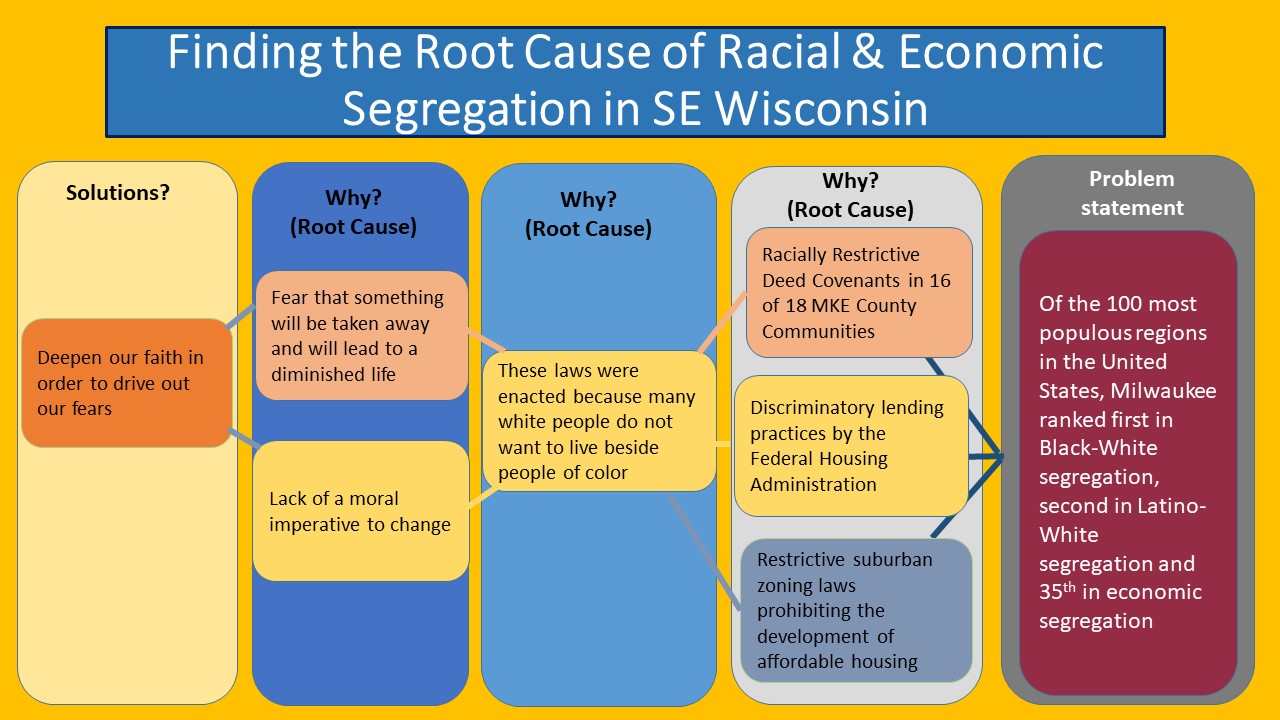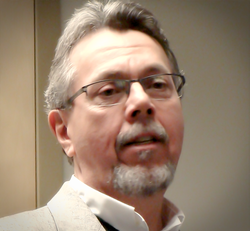Many white people don’t want to live beside people of color. When said this directly it seems obvious. A community does not create laws and erect barriers with the express purpose of keeping people out unless they just don’t want to live next to them. What is the root cause of the racial and economic segregation in southeastern Wisconsin?
In the world of process improvement, there is a tool used by practitioners to identify the “root cause” of a problem. The tool is called the “5 Why” exercise. To do this you basically define a problem and then ask “Why” five or so times until you identify the core element driving the issue. I use this 5 Why exercise in my work when helping communities understand the root cause of the issues they face such as an increase in child protective service actions or lackluster reading scores. I thought it would be helpful to apply this tool to the problem of racial and economic segregation in southeastern Wisconsin. A picture of the completed exercise is provided at the head of this article. The first step of this exercise is to clearly and factually define the problem. The problem statement I used is this: “Of the 100 most populous regions in the United States, Milwaukee ranked first in Black-White segregation, second in Latino-White segregation and 35th in economic segregation.” The next step is to ask “Why”? Why does Milwaukee rank so high among the 100 most populous regions of the country? I came up with three reasons for the ranking:
From my perspective, the answer is the same for all three: Many white people do not want to live beside people of color in southeastern Wisconsin. And now the hard question: Why do so many white people not want to live beside people of color in southeastern Wisconsin? Before I answer that question from my perspective I am compelled to provide a few caveats. First, this is not a condemnation of all white people. And it certainly isn’t an attempt to create a sense of guilt or to point the finger of blame. All I am trying to do is take a hard and honest look at the root cause of discrimination in southeastern Wisconsin. When I search my heart, I cannot identify any core reason for the restrictive laws other than what I have stated: Many white people don’t want to live beside people of color. When said this directly it seems obvious. A community does not create laws and erect barriers with the express purpose of keeping people out unless they just don’t want to live next to them. If we aspire to be one community, then eventually we must answer this critical question: What is the root cause for why white people don’t want to live beside people of color in our region? I can come up with two reasons. First, I think people are afraid. They believe that something will be taken away from them and some part of their life will be diminished if they live and raise their children in a racially and economically integrated environment. Second, there is no real sense of a moral imperative. The fear people feel overrides any faith dictate to “love my neighbor as myself” or to put faith into action. In 1957 when Dr. Martin Luther King founded the Southern Christian Leadership Conference, he did so with the stated purpose of working to save the soul of America. That was King’s analysis of the solution to racial and economic discrimination sixty years ago, and I believe it is the same today. The soul of America is crippled with fear and the faith of America is held hostage to that fear. That, I believe is the root cause of discrimination and segregation in southeastern Wisconsin. We allow our fear to quiet the leadings of our better angels. The answer I believe, is to delve deeply into the teachings of our faith traditions. There, we will find a mandate to love our neighbor as ourselves, said in a myriad of ways by a wide variety of spiritual leaders. When we renew our faith, we will have quelled our fears. When we renew our faith, we will have healed our souls and in the process, we will have healed the soul of America.
0 Comments
Your comment will be posted after it is approved.
Leave a Reply. |
AuthorMichael Soika has been a community activist for more than 30 years working on issues of social and economic justice. His work for justice is anchored by his spiritual formation first as a Catholic and now as a Quaker. Archives
June 2018
Categories |


 RSS Feed
RSS Feed